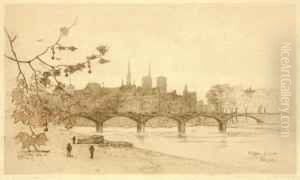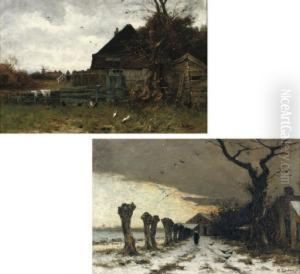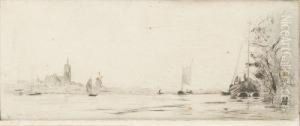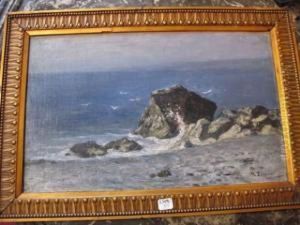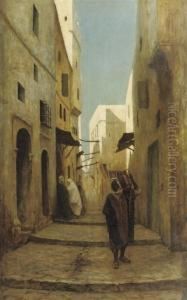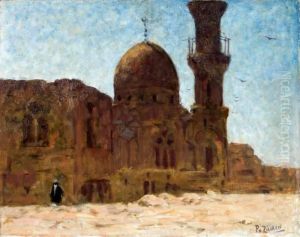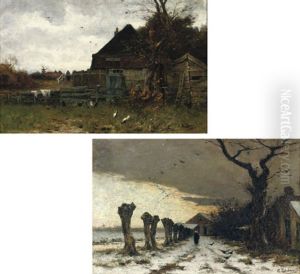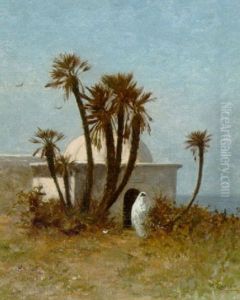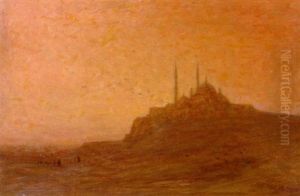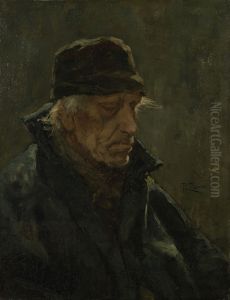Philip Zilcken Paintings
Philip Zilcken, born Charles Louis Philippe Zilcken in The Hague, Netherlands, on October 28, 1857, was a multifaceted Dutch artist known for his work as a painter, printmaker, and writer. His artistic journey began under the guidance of his mother, an amateur artist herself, who encouraged his early forays into art. Zilcken further honed his skills at the Royal Academy of Art in The Hague, where he was exposed to a variety of art forms, but it was in the realm of etching and printmaking that he truly found his calling.
Zilcken's career took a significant turn when he started to travel extensively throughout Europe and North Africa. These travels enriched his artistic palette, allowing him to absorb various influences which he then skillfully integrated into his own work. He became particularly known for his landscape etchings and cityscapes, capturing scenes with a delicate and refined touch that was highly regarded by his contemporaries. Zilcken's work during this period reflects a mastery of light and shadow, contributing to the atmospheric quality of his prints.
Apart from his own creation, Zilcken played a crucial role in promoting Dutch art internationally. He was a member of various art societies and frequently contributed to art journals and publications. His efforts in these areas helped to introduce Dutch artists and their works to a wider audience, thereby fostering a greater appreciation of Dutch art abroad.
Philip Zilcken's friendship with other artists and intellectuals of his era, including the French novelist Marcel Proust, further illustrates the breadth of his connections and influence within the European art and literary circles. Despite his extensive travels and interactions with artists from different backgrounds, Zilcken remained deeply rooted in the Dutch artistic tradition, often reflecting this in his choice of subjects and technique.
Zilcken continued to produce and exhibit his work well into the later years of his life, maintaining a passion for art that never waned. He passed away on October 5, 1930, in Paris, France, leaving behind a legacy that not only includes his vast body of work but also his significant contributions to the cultural exchange between the Netherlands and the rest of the art world. Through his etchings, paintings, and writings, Philip Zilcken remains a notable figure in the history of Dutch art, remembered for his artistic versatility and his efforts to bridge different art communities.
